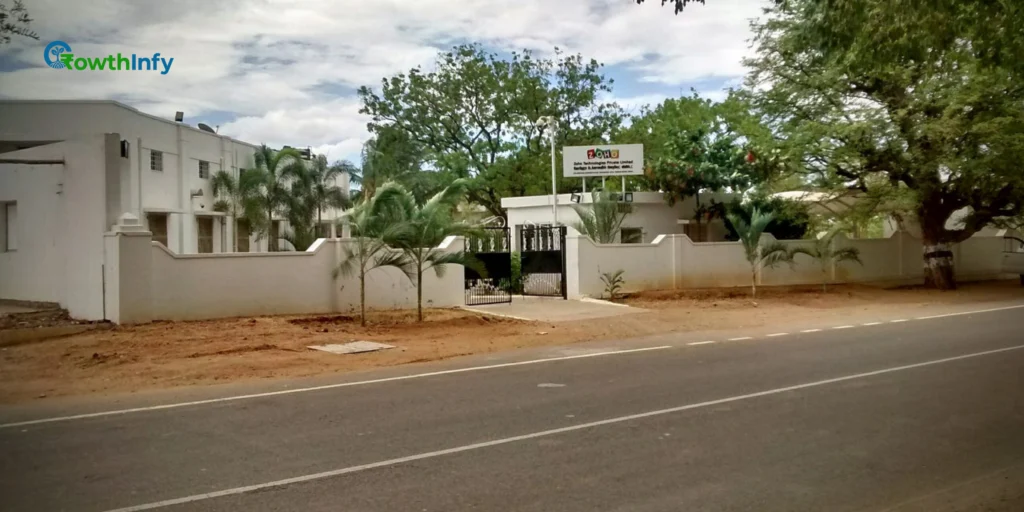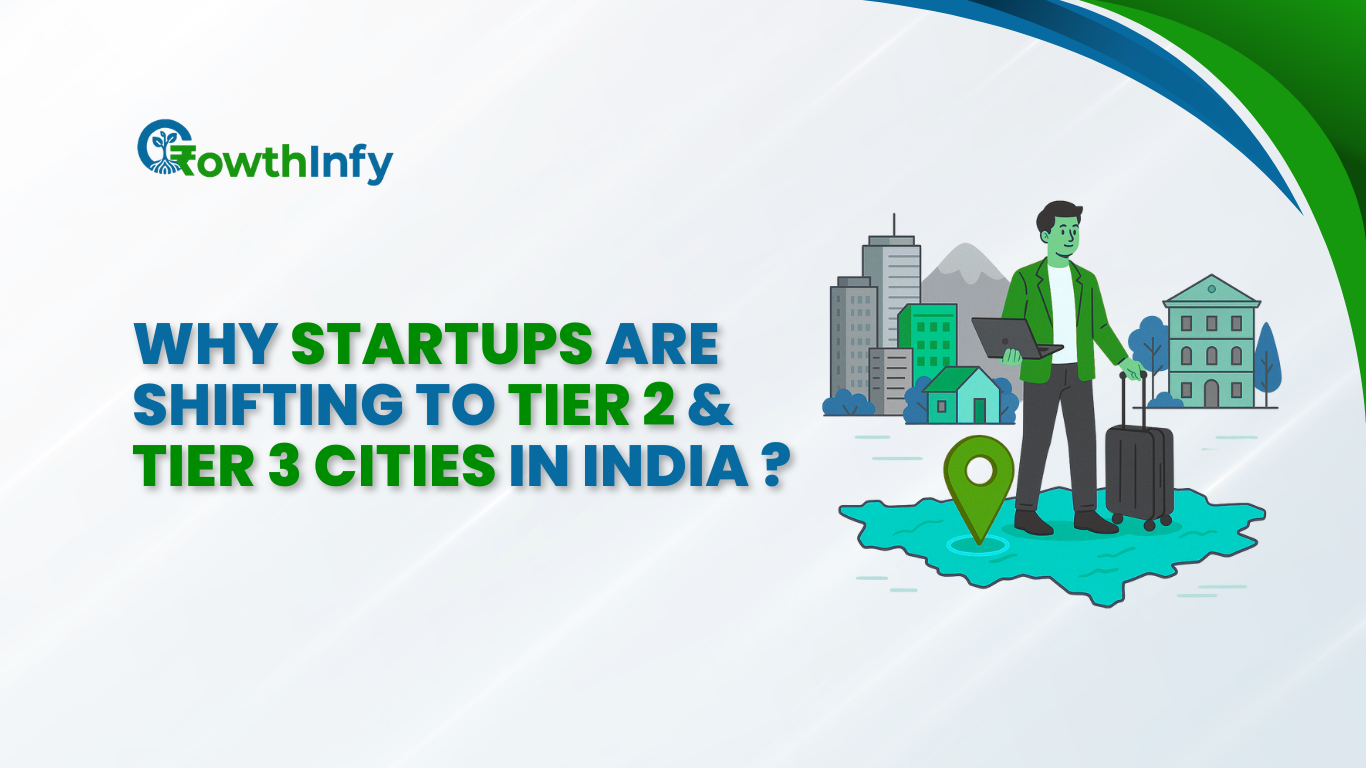Why Startups Are Moving to Tier 2 and Tier 3 Cities in India
India’s startup ecosystem is in a state of rapid transformation. Once subject to major city hubs like Bengaluru, Mumbai, and Delhi-NCR, entrepreneurship is growing at an incredible rate in Tier 2 and Tier 3 cities like Jaipur, Indore, Coimbatore, and Bhubaneswar. The transition is driven by a mix of reductions in overhead costs, access to new talent, digital infrastructure, and most importantly government support. Let’s explore why the new focus of startups are smaller cities in India.

Lower Operational Costs: A Financial Advantage
Startups in Tier 2 and Tier 3 cities do not have the same expense profile as working in metros. For instance real estate (offices and employee housing) could be 25-50% less desirable in a city like Jaipur or Surat, so organizations representing startups can use less resources or budget. Office space and utility costs are a fraction of costs in any of the metros allowing startups to utilize their budgets to the fullest and work around margins that range. This is particularly great for bootstrapped startups or the early stage of funding.
The salaries in Tier 2 and Tier 3 cities are competitive and lower than Tier 1 cities. This gives Indian entrepreneurs a chance to find talent, especially because they are able to pay talent at a balm to their operation. Entrepreneurs can hire skilled professionals without the financial strain of metro-level compensation. This financial flexibility allows startups to invest more in innovation, product development, and marketing.
Access to Untapped Talent Pools
There is an increasing talent pool of digitally literate young professionals in Tier 2 and Tier 3 locations. Smaller cities such as Indore and Chandigarh develop nearly 60% of the engineering, arts, and science graduates in India, providing a net talent supply. Startups like Minimalist based in Jaipur, have been able to tap into a local labour market that is eager to recruit local talent with candidates even willing to move to these areas for the right opportunity.

Secondly, the talent pool stability that smaller cities provide is an added benefit. The highly competitive nature of larger metropolitan areas leads to higher rates of turnover due to job-hopping employees. However, employees in smaller cities tend to have a longer tenure before moving on to new opportunities. This reduced turnover cost makes larger tiers, such as Tier 2 and Tier 3 cities an attractive option in building a loyal and longer-term team.
Robust Digital Infrastructure
India’s digital divide is decreasing very quickly with initiatives such as BharatNet and Digital India. High-speed internet, cheap smartphones, and applications such as UPI have created a digital connection in Tier 2 and Tier 3 cities. Startups can now reach customers, onboard vendors, and scale up in areas previously considered remote.
Case in point, edtech startups are in cities such as Patna, and taking advantage of local dialects to develop specialized content. Logistics startups in Bhubaneswar continue to optimise rural deliveries. These tools have opened opportunities for startups to reach local markets, as well as scale sustainably, both in India and abroad.
Government Support and Initiatives
The Indian government has played a very significant role in encouraging the growth of startups in smaller cities. Programs such Startup India, BharatNet, and Digital India Startup Hub help provide funding, mentors, and infrastructural abilities. According to the Ministry of Commerce and Industry, approximately 50% of DPIIT-recognized startups (about 56,000), are based in Tier 2 and Tier 3 cities, due to the efforts of the government and states.
States are also taking action. For example, Madhya Pradesh has a Startup Policy, Kerala has a Startup Mission. Both offer financial benefits and innovation funds for entrepreneurs in cities such as Indore and Kochi. These strategies provide an environment in which startups can flourish.
Untapped Markets and First-Mover Advantage
Tier 2 and Tier 3 cities present under-served markets with increasing consumer demand. These are some of the fastest urbanising areas of the country, and with rising disposable incomes and increasing internet penetration, these consumers are hungry for modern products and services. Start-ups like SuperK in Kadapa and eduSeed in Virudhunagar are taking advantage of this demand, with less competition locally in retail and education respectively.
Having a first mover advantage while at the same time building brand loyalty is critical before larger operators-enablers can penetrate these markets. The reach of e-commerce players like Amazon and Flipkart from urban centres to Tier 2 cities such as Lucknow, with consumer demand and spending on the rise, and their brand building from this, will put competitive pressure on the likes of SuperK and eduSeed.

Challenges in Tier 2 and Tier 3 Cities
Even when potential opportunities exist, startups in smaller cities will encounter obstacles. Limited access to funding will create constraints. Only 12% of startups receive pre-seed funding, and a small 2% receive Series A. Infrastructure, like access to roads or public transport, may block operational progress.
There is also a scale factor from local markets to beyond local markets, as well as limited resources and limited mentorship. However, partnerships with incubation centres like the Sikkim Entrepreneurship and Economic Development Cell or IIT Guwahati’s Technology Incubation Centre, are helping with the gaps through their network of support, mentoring and funding.
Success Stories from Smaller Cities
More than a few startups have shown that there is potential in India’s Tier 2 and Tier 3 cities. OYO Rooms began in Ahmedabad and eventually grew from an online budget hotel platform to a global unicorn. CarDekho began in Jaipur and eventually became a leading online platform for car transactions. These success stories create pathways for new entrepreneurs while also drawing investor interest.
Another example of innovation outside of the metro cities is the fintech startup, PhiCommerce that started in Pune or the DeepTech company, Saankhya Labs that began in Visakhapatnam. Both used available talent and local infrastructure to create globally scalable and competitive solutions.
The Role of Coworking Spaces
The emergence of coworking spaces in Tier 2 and Tier 3 cities has contributed to the significant growth of startups in these cities. Demand for flexible workspaces in cities like Jaipur and Indore have increased by 45%, with affordable office space options for startups and remote workers. Coworking spaces in these cities also provide start-ups and remote workers access to modern-day amenities which encourage collaboration and innovation.
The Future of Startups in Smaller Cities
The startup craze in Tier 2 and Tier 3 cities is ready to shift into a higher gear. Predictions by a NASSCOM and Red Seer report in 2024 show that by the year 2026, 58% of the new user acquisition for consumer internet startups will be from non-metros. Consumer internet startup funding has risen from ₹375 billion in 2021, to ₹1.13 trillion in 2023. This sector is destroying the idea of traditional investment in startups.
As digital penetration deepens and government support continues to strengthen, cities such as Surat, Coimbatore, and Chandigarh seem primed to emerge as hot spots for innovation. From agritech, edtech, and fintech, startups that focus on solving local issues will be the drivers of economic growth and job creation.
Conclusion
The relocation of startups to Tier 2 and Tier 3 cities signifies the beginning of a new era in India’s startup ecosystem. The lower cost of doing business, availability of large talent pools, ready access to digital connections, and government support are reasons that Tier 2 and Tier 3 cities provide attractive prospects for entrepreneurs. There have been challenges such as access to funding, poor infrastructure, etc., however the opportunities are far greater than the challenges. These so-called emerging startup hubs can provide startups with better opportunities to not only grow sustainably, but promote the economic transformation of India.




